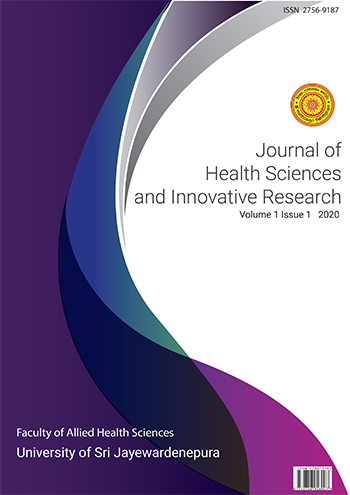Perceived Barriers in Communicating with Nurses and Patients During Clinical Learning among Nursing Students of Two State Universities in Sri Lanka
DOI:
https://doi.org/10.31357/jhsir.v1i01.4770Abstract
Introduction: Nursing students who undergo clinical learning in hospitals frequently communicate with nurses and patients. Communication barriers act as a burden to reach the desired quality of their learning. Previous studies indicate that barriers to communicate with nurses by nursing students are significantly higher compared to patient-related and nursing student-related barriers. This study aimed to describe perceived barriers to communicate with nurses and patients during clinical learning among nursing students of two state universities in Sri Lanka. Methods: A descriptive cross-sectional study was conducted using a convenience sample of 120 nursing students from 2 nd , 3 rd and 4 th years in the University of Sri Jayewardenepura and the Eastern University of Sri Lanka. A previously validated questionnaire, consisting three barrier categories; nurse-related, patient-related and student-related was adapted and pretested for the study. Data were analyzed using descriptive and inferential statistics in SPSS version 23. Results: The majority of participants were females (77.5%). All three barrier categories were perceived as moderate by a majority; 66.7%, 72.5% and 66.6% respectively. Nurse-related barriers had the highest overall mean score (3.31±0.56) compared to patient-related (3.12±0.64) and nursing student-related (3.00±0.68) barriers. The highest mean score (3.91±0.99) was evident for nurses’ negative attitudes towards nursing students, serious disease conditions of patients (3.75±1.03), and language differences (3.34±1.36). Conclusions: The three tested barrier categories were found to be moderate where nurse-related barriers were the highest and nursing student-related barriers were the lowest. The study recommends to provide adequate training on effective communication skills in clinical settings for nursing students. Continuing education programs for nurses should also focus on facilitating student training in clinical settings.
Keywords: Clinical learning, Communication barriers, Nursing students, Nurses, Patients



